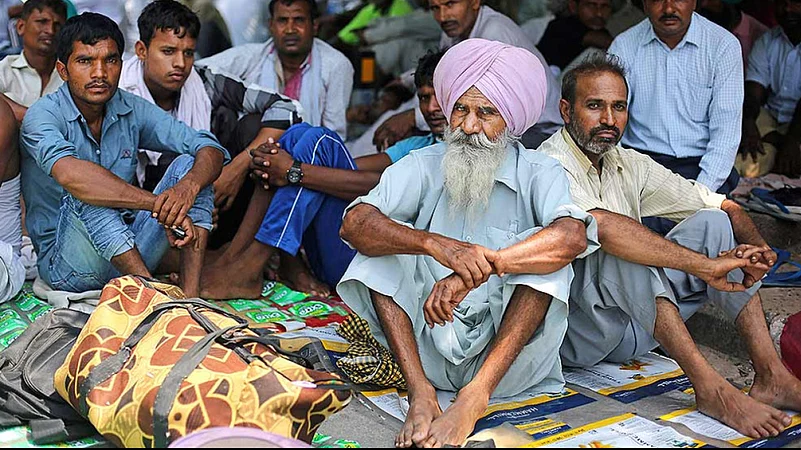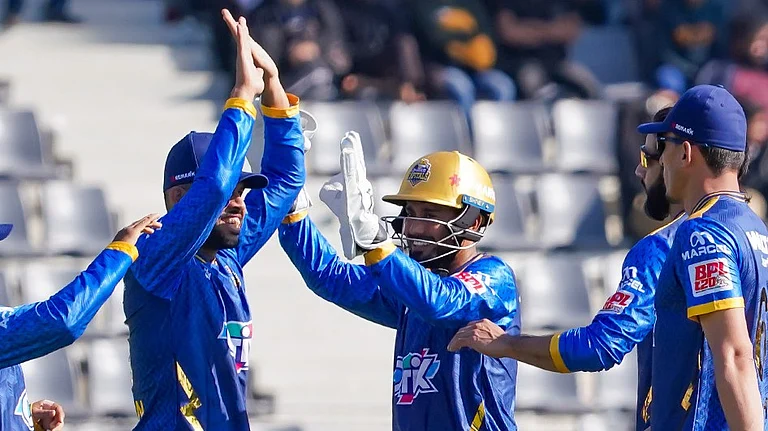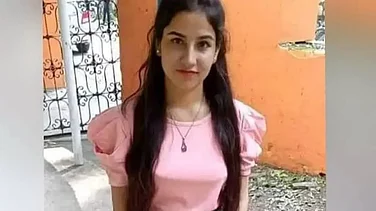Much before Charanjit Singh Channi assumed the office of Chief Minister (CM) of Punjab and later his announcement by the Congress party as its chief-ministerial candidate for the forthcoming Punjab Assembly election, almost all the political parties in the state have promised to appoint a Dalit Deputy-CM/CM, if elected to form government.
Never before, Punjab had ever witnessed such a dominant political discourse focused on the arithmetic of Dalit electoral politics. Punjab houses about thirty-two percent of Scheduled Castes (SCs), highest in comparison to all other states in India. In many districts of Punjab, SCs population varies between 32.07 to 42.51 percent.
In 57 villages, they constitute 100 percent population and in other 4,799 villages, their share is forty percent or more. It was against this backdrop of huge SC population that the cliché of Dalit CM and Deputy-CM by the Congress and all other political parties respectively was devised to aim at the consolidation of Dalit votes in Punjab.
Complexities of Caste Configurations in Punjab
The political idea of the consolidation of SC votes behind a single political party, given the religious and caste fault lines across the various SC sub-castes in Punjab, seems not only to be too ambitious but also utopian. The official state list of SC category in Punjab includes thirty-nine sub-castes spread over four main religions and a large number of sects/faiths of varied nomenclature. Though four major sub-castes out of the total thirty-nine SC sub-castes namely Mazhabi, Ravidassia-Ramdassia, Ad-Dharmi, and Valmiki constitute about three-fourth percentage of the total SC population in Punjab, but they lack homogeneous collective single caste identity. The remaining thirty-five smaller SC sub-castes, which constitute one-fourth percent of the total SC population, are again a divided house: thirteen of them are designated as Depressed Scheduled Castes (DSCs), seven are called Vimkut Jatis (Denotified Tribes), and eighteen are termed as peripheral/invisible castes.
The numerical strength of majority of the smaller SC sub-castes varies between two to less than one percent. The Vimkut Jatis – allegedly descendants of Rajputs, who took to vagrant life styles as a strategy of their fight against the Mughal and British rulers – openly challenged the consolidation of SC votes. They vehemently contest their inclusion in the SC list of Punjab and assert for an exclusive and separate non-dalit caste identity. The peripheral and invisible sub-castes constitute less than 10 percent of the total SC population in the State.
The numerical strength of some of them like Chanal, Perna and Pherera castes is less than 100 persons each. Except the Dhanak sub-caste, having a little over just one percent, the numerical strength of all other sub-castes in this segment is less than one percent. It is for this reason that majority of the SC sub-castes do not figure at all in the popular electoral political discourse of different political parties. The Rai Sikhs, the erstwhile Mahatam, is the only exception. They comprised about six percent of the total SC population.
The above analysis shows that Dalit castes do not make a homogeneous group. All of them are sharply divided across their respective distinctive cultural heritages, faiths and beliefs, and socio-religious background. Among them Mazhabi, Ravidassia, Ramdassia, Ad Dharmi and Valmiki, for their larger numerical strength, matter the most in the state electoral political discourse. However, their being ensconced into divergent religious, social, cultural and political domains, as well as intensely involved in a power game against each other, preclude the overall consolidation of Dalit votes behind any single political party.
Mazhabis-Valmikis vs Ravidassias-Ramdassias
SCs in Punjab, despite having extraordinary numerical strength, have failed to emerge as a significant political force. Though traditionally, Ravidassias, Ad Dharmis and Valmiks are generally considered closer to Congress, and Mazhabis, Ramdassias, Rai Sikhs and Sansis to the Shiromani Akali Dal (SAD), there is nothing sacrosanct about heir political affiliations, which kept on shifting across two traditional political parties during varied electoral intervals in Punjab. Valmikis consider Maharishi Valmiki, Sant-poet, their Guru. Mazhbis, consider Shaheed Baba Jiwan Singh (Bhai Jaita Ji), Ranghreta Guru Ka Beta, their Guru. Mazhbis are mostly concentrated in Majha and Malwa regions of Punjab, wherein they are currently engaged in fierce struggle for their claim on the Panchayats/common agricultural lands for self-cultivation under the leadership of Zameen Prapti Sangharsh Committee.
At the district level, they are largely concentrated in Ferozepur, Gurdaspur, Amritsar, Faridkot, Mansa, and Bathinda. They outnumber other SC sub-castes in Faridkot and Ferozepur districts. Despite their highest numerical strength, they are the most deprived section among the SC with the lowest literacy rate (42.3 percent). Majority of them (52.2 percent) are still languishing in low wage agricultural farm jobs. Though the Siris (attached labourer) system has ceased to exist in the state, but in the Malwa region some of them still work as Siris. However, over the years their position has improved, particularly after the implementation of the contentious policy of reservation within reservation in Punjab.
The Ravidassia-Ramdassia caste cluster (34.93 percent) consists of two SC sub-castes: Ravidassia-Ramdassia and the Ad-Dharmis. Ravidassias and Ramdasias considered themselves socially higher than all other SC categories. Those among them who converted to Sikhism came to known as Ramdasias. They are also known as Khalsa biradar (brother). Though this cluster is largely confined to the Doaba region of the Punjab, they are also numerous in Gurdaspur, Rupnagar, Ludhiana, Patiala and Sangrur districts. In the mid-1920s, some of them established a prosperous leather-business town (Boota Mandi) in the outskirts of Jalandhar city and were also the main force behind the emergence of the famous Ad Dharm movement of Punjab. In the Census of 1931, many of them registered themselves under the then newly declared religion of Ad Dharm. However, after India’s independence, Ad Dharm, a separate Dalit religion, was squeezed into a caste – Ad Dharmi.
Myth of Consolidation of Dalit votes
On the basis of the above discussion, it can easily be deduced that out of the 39 sub-caste within in the Punjab list of SC, only four sub-castes (grouped into two distinct caste clusters) constitute almost three fourth of the total SC population of Punjab. These two caste-clusters, as explicated above, have divergent cultural and religious outlooks, imbalanced educational and economic backgrounds, and distinctive political affiliations, which not only make the consolidation of Dalit votes cumbersome but also problematic. Ravidassia, Ramdassia and Ad Dharmis among them are ahead in all walks of life. They are the main beneficiary of the reservation policies in education, government jobs and legislature.
Some of them have established their strong hold over the leather business, surgical industry, and sports goods. Many of them have also emigrated to Europe, North America, and the Middle Eastern countries that further contributed tremendously towards their upward social mobility. They have not only excelled in business and multiple skilled professions, but also established their separate caste identity through a strong networking of social organizations, religious bodies, international Dalit conferences, Ravidass Sabhas and deras/gurdwaras. They take pride in publicly flaunting their distinct social identity markers to promote their community cultural heritage. Among them Ravidassias declared themselves into a separate religion after a year of violence at a Ravidass temple in Vienna in 2019.
Another equally populous, rather slightly more numerous, SC sub-castes cluster is of Valmikis and Mazhabis. In comparison to Ravidassia-Ramdassia and Ad Dharmi caste cluster, Valmiki-Mazhabi caste cluster is highly backward in terms of educational, governmental jobs and ventures abroad. It often blames latter caste cluster for its obvious backwardness and neglect while cornering a major share in the reservation policy. Though this cluster is sharply divided within its own purview between Valmiki (Hindu) and Mazhabi (Sikh) caste identities, it has been able to forge a common front against the Ravidassia-Ramdassia and Ad Dharmi caste cluster and was able to secure reservation within reservation.
The 25 per cent SC reservation quota in Punjab government services was divided into two sub-quotas of 12.5 percent each for Valmiki-Mazhabi (two SC castes) and rest of the 37 SC castes as per the Punjab Government Circular No. 1818SW75/10451 passed in 1975 during the tenure of chief-Ministership of Giani Zail Singh. Later, the Punjab government turned this Circular into Punjab Act – The Punjab Scheduled Castes and Backward Classes (Reservation in Services) Act, 2006 – which was notified on October 5, 2006.
Both the above caste clusters have their distinct sects, gurus, pilgrimage centers, shrines, iconography and sacred scriptures. If Dera Sach khand Ballan at Jalandhar and Sri Guru Ravidass Janam Asthan Temple at Seer Goverdhanpur at Varanasi have become the most sought after pilgrimage centers for the Ravidassia community, the Valmiki Tirath Dham at Amritsar carries the same spiritual value for the Valmikis. What sacred scripture ‘Amritbani Sri Guru Ravidass Ji Maharaj’ is to Ravidassias; ‘Yog Vashisht’ is to Valmikis. If Guru Ravidass is Shiromani Sant of Ravidassias; Maharishi Valmiki is the Adi-Guru for Valmikis and Baba Jiwan Singh for the Mazhabis. The shrines of Ravidassias are called ‘deras,’ whereas Valmikis called their shrines ‘Anant’ (Adi Dharm Temple). Ravidassias accost each other with ‘Jai Santan Di’ and summarise their religious ceremonies while uttering ‘Jo Bole So Nirbhay, Sri Guru Ravidass Maharaj Ki Jai’; the Balmikis’ prototype of the same is ‘Jai Valmiki’ and ‘Jo Bole So Nirbhay, Srishtikarta Valmiki Dayavaan Ki Jai’.
The mainstream political parties often exploit the above-mentioned cleavages between the two main SC caste clusters. Both the Congress Party and the Shiromani Akali Dal (SAD) supported Valmikis and Mazhabis against the Ravidassia-Ramdassia and Ad-Dharmis on the contentious issue of reservation within reservation. The political support extended to a particular cluster often sharpens the inter-cluster division among the SC with serious implications for an overall dalit solidarity for a particular single political party. In the past, during the struggle of the historic Ad Dharm movement, Ad-Dharmis failed to get the support of the Valmiks and Mazhabis.
The indifference of the latter towards the Talhan, Meham and Vienna skirmishes are a few more instances of open division between these two SC sub-caste clusters. A few years before, heated verbal duel between the Valmiki-Mazhabi and Ravidassia-Ramdassia factions of the Congress Party during its Chandigarh conclave over the allotment of a Rajya Sabha (Upper House) seat to Shamsher Singh Dullo (an Ad Dharmi) against Hans Raj Hans (a Valmiki) indicated sharp heterogeneity among the SCs of Punjab.
The Bahujan Samaj Party (BSP) also failed to get established in Punjab because it came to be aligned with the Ravidassia SC sub-caste only. Failing to muster support from other major SC sub-caste in the state, Babu Kanshi Ram, its founder president, was compelled to shift its base to Uttar Pradesh.
Familiar with the ground reality in Punjab, the BSP has formed an alliance with the SAD to contest jointly in the forthcoming Punjab Assembly elections. If the BSP, an exclusive SC political party, had failed to consolidate Dalit votes in Punjab, how come Congress party will succeed in that by simply projecting a Dalit CM face to woo the former? Geja Ram, Chairman, Safai Karamchari Commission, who belonged to the Valmiki SC sub-caste and recently left the Congress and joined the BJP, told the Hindustan Times (February 13, 2022): “Balmikis and Majhbis have strong apprehensions about the Congress giving preference to influential Ravidassias.”
“If you look at the ticket distribution this time,” he continued, “the Congress has cut four tickets of Balmikis to prefer Ravidassias. Out of 34 reserved segments, 24 candidates are Ravidassias/Ramdassias whereas only nine are Balmikis, and one Bazigar, whereas we are the highest in population among the SCs. What is there for other castes aiming consolidation?” Whether the Congress party will succeed or not in consolidating Dalit votes, but there is a possibility that such a Machiavellian move may lead to counter consolidation among the Hindu Upper-castes and agricultural dominant castes.
To whom such counter consolidation will accrue electoral benefit is a matter of pure conjecture. SCs in Punjab have never acted as an exclusive ‘vote bank’ for any single political party. In the last assembly election, out of the total 34 reserved assembly seats, Congress obtained 21, AAP got 9, SAD won 3 and 1 went to BJP.





















